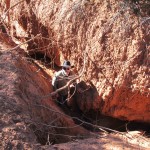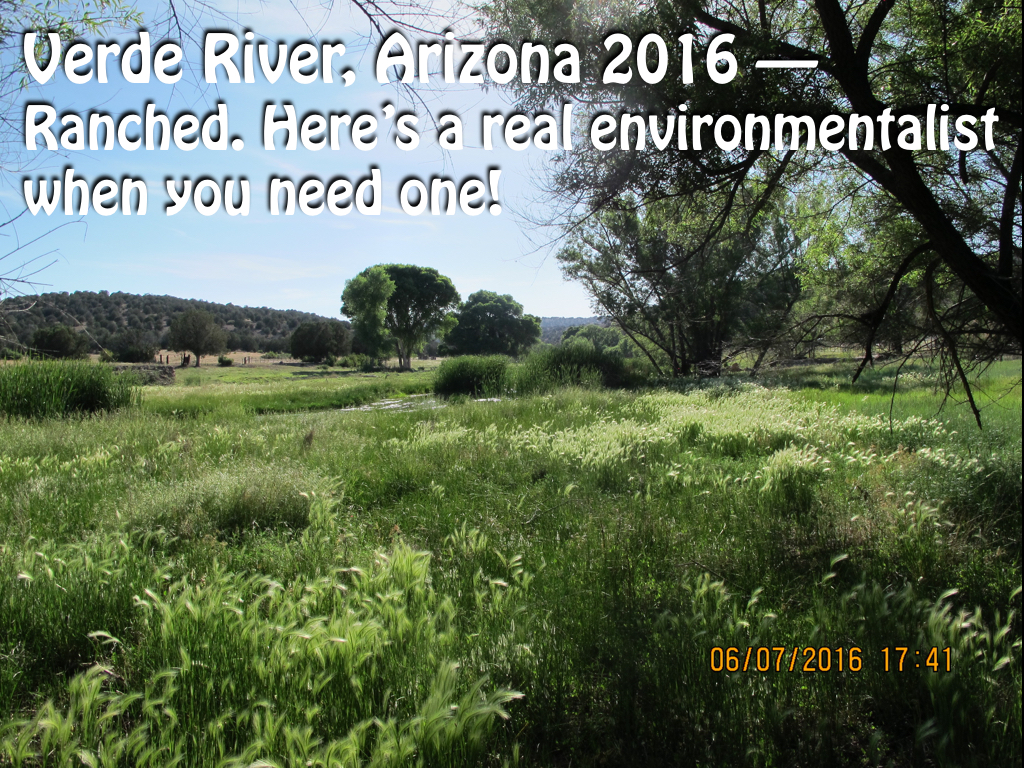
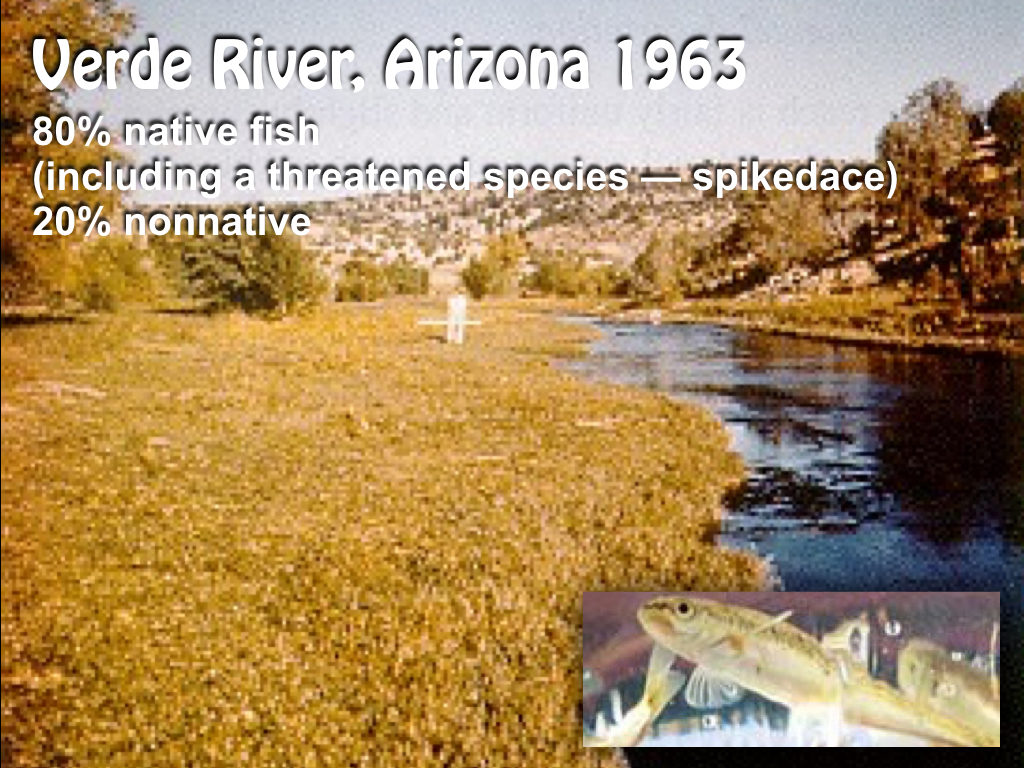
Verde River, Arizona 1963 — 80% native fish (including a threatened species — spikedace), 20% nonnative
How would a real environmentalist sustain this valuable resource?
Protect it, right?
Let’s try it.
Let’s protect the public land along the Verde River to sustain meadows like the one pictured above and more like it that border the Verde, and to keep the threatened spikedace from going extinct.
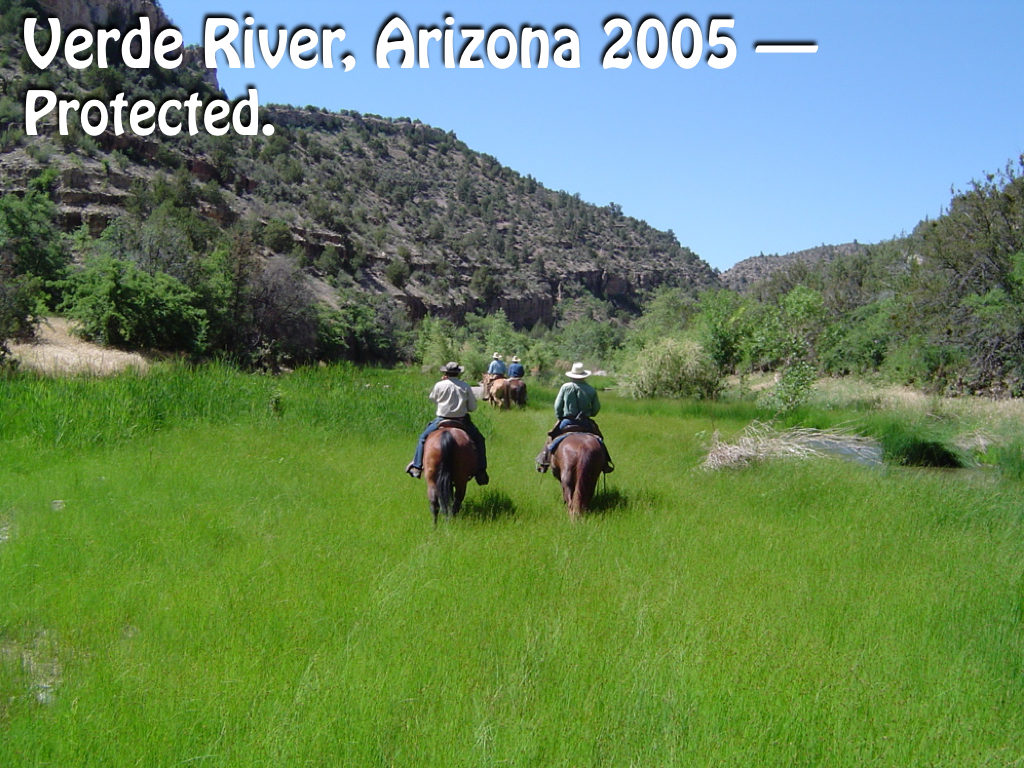
Here’s the Verde in 2005 after 8 years of protection. Everything seems to be going along as expected. Let’s continue our ride upstream…
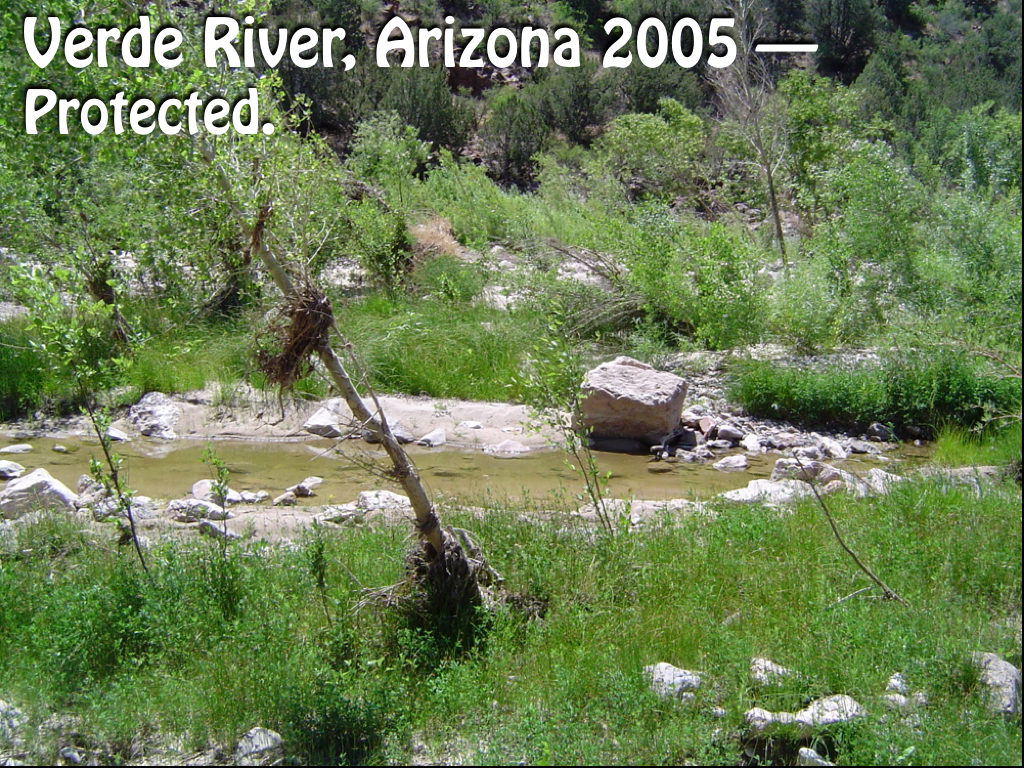
Oops! What’s happening here? This photo was taken on the same day as the one above a short distance upstream. 8 years of protection doesn’t seem to be working so well here…
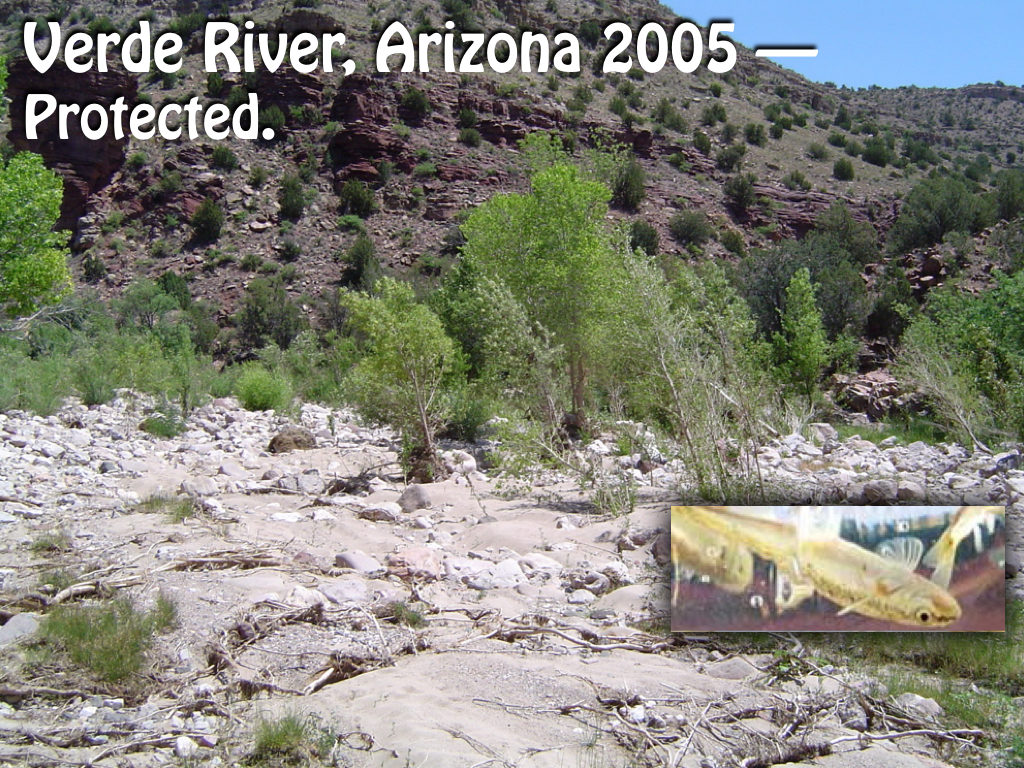
This photo was taken on the same day in 2005, too. It looks even worse, and what about the ”threatened” spikedace?…
None have been seen in the upper stretch of the Verde since it became protected in 1997.
Maybe we ought to protect it a little longer!
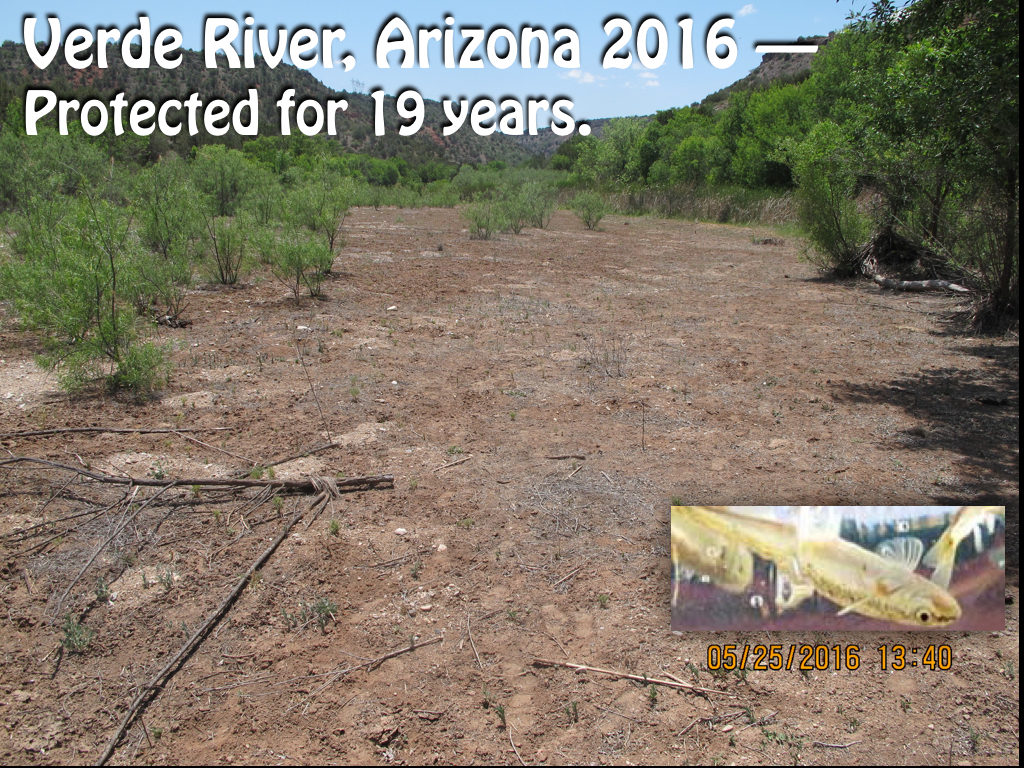
Same river, different place — in 2016, after 19 years of protection. Still no spikedace.
Time to try something else?
A tactic that has worked in similar situations is using cattle to mimic the impacts of herds of natural animals (elk and bison) and use that interaction to sustain green meadows like those along the Verde. You know, it works the way bees sustain flowers by using them and beavers sustain meadows by building dams in order to feed on the plants nurtured by the beaver-created irrigation…
Here we go…
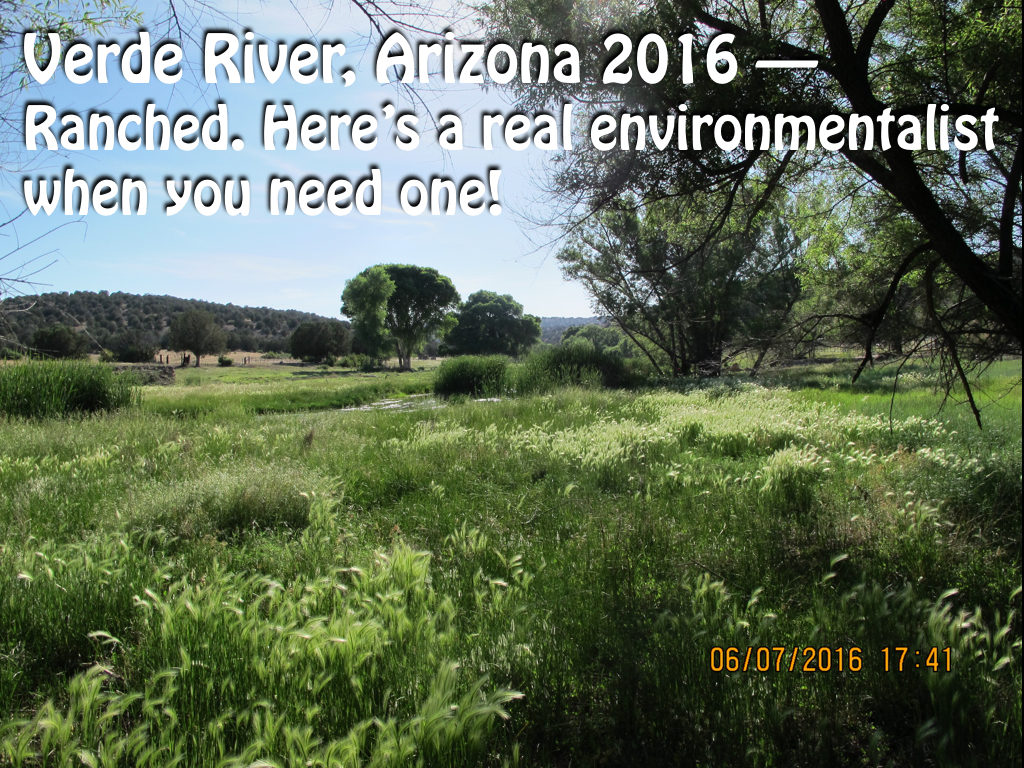
Verde River, 2016 — Sustained by livestock used to mimic the impacts of herds of natural animals (elk and bison) that grazed here sustainably for thousands of years. (These last two photos were taken within 13 days of one another.)
Note: In spite of the health of this stretch of river, there are still no spikedace here, but the most significant populations of native fish that have managed to survive in the Verde can be found here and in similarly managed places along the river.
Where can you find some spikedace? Try the section of the Gila River that flows through the U Bar Ranch in New Mexico. It is not only home to one of the largest known populations of the now endangered spikedace, but the same goes for another endangered native fish — the loach minnow and an endangered bird — the southwestern willow flycatcher. Here’s a picture of a group of ranchers and enviros doing some birdwatching (and fishwatching) on the U Bar.
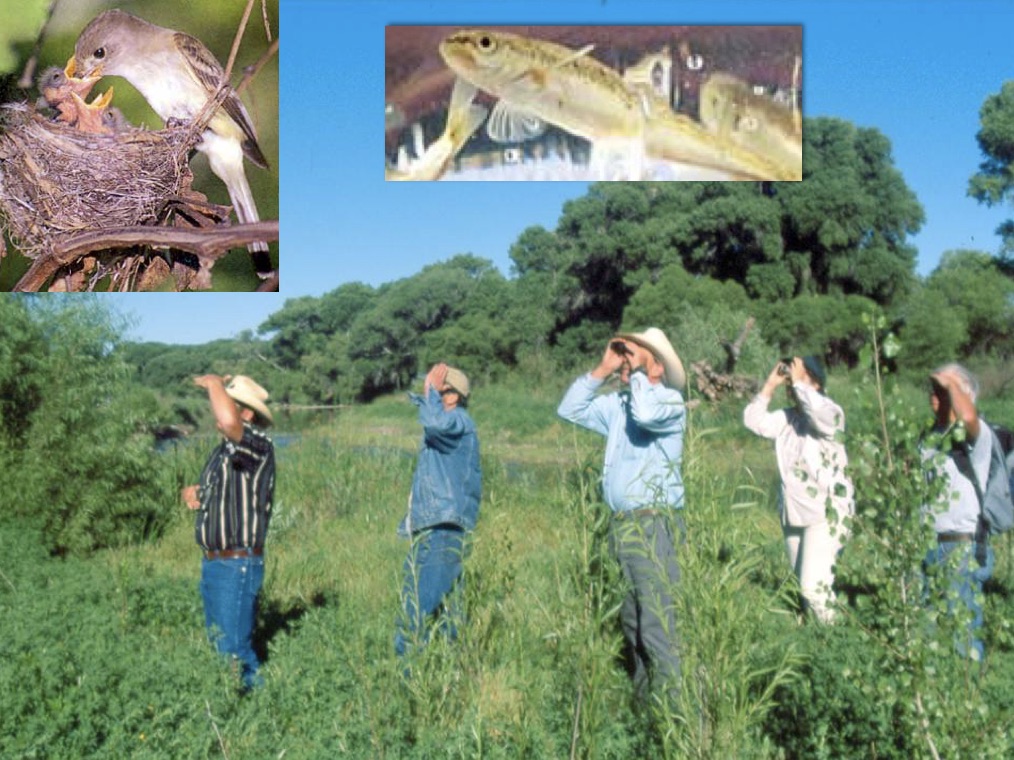
CELEBRATE SUCCESS! It feels good to learn about something that works, doesn’t it?



